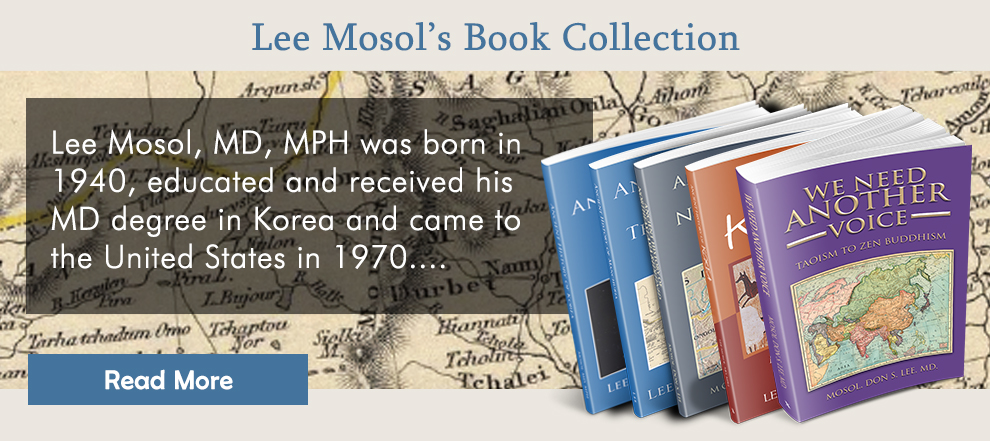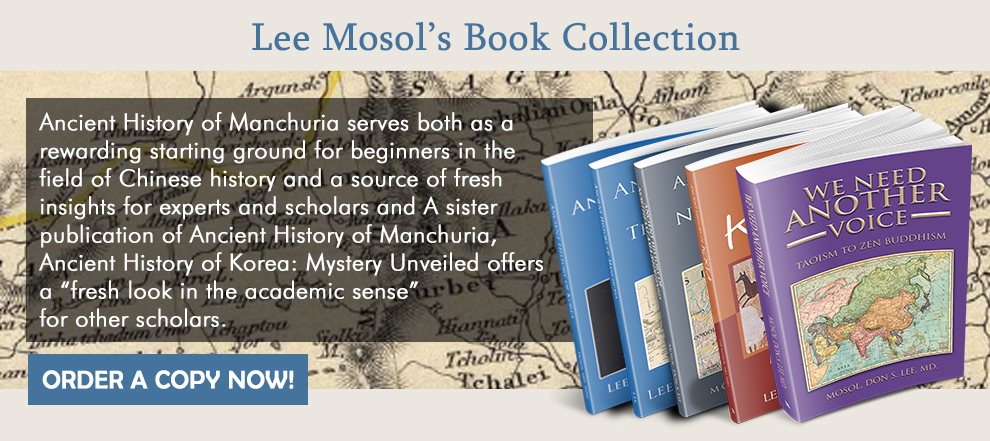Family names of Xian Bei tribes.
The family names of Xian Bei appear first time after Gongson Yuan (公孫淵) removed in 238 AD. Xian Bei was a branch of Old Joseon (東胡) people survived by hiding in the Yiwulü Mountain(黑山, 醫無閭山, 富山) along with Buyeo(扶餘, not夫餘),literally helpful extra, not useless extra . They used to live in the Skeleton Capital (骨都,烏骨城, 訖升骨城) region along with Wuhan(烏桓, 烏丸) and Buyeo. Wuhan had met the atrocity most. Thereafter, Wuhan lost political entity and assimilated to the others nearby. Buyeo who had marriage alliance with Gongson clan lost power as well. The Xian bei clan under Murong Hui (慕容廆: 269–333) invaded Goguryeo of King Bongsang (烽上王: r. 292–300) first time in 293. Goguryeo made an alliance with Yuwen (宇文) and Dan(段氏) clan to attack the Murong Hui who was in the Skeleton Capital .
Another political entity known as Young-Ji (令支國) was in the Liao-xi region . The logogram “令支, 不令支” is a semantic description meaning [order received through the beam of lights] which is embedded in the names of Xianbei clan “叚氏, 拓拔氏, and 宇文氏”. They were descendants of the Old Joseon and next to each other in the west of Goguryeo. 慕容懿太傅評之孫也為鎮西大將軍幽州刺史封上庸公出鎮肥如慕容雲之亂懿以令支奔降於魏魏以懿為征東將軍平州牧昌黎王.
慕容雲字子雨寶之養子高句驪之支庶也皝破高句驪徙於青山由是世為燕臣祖父高和自云高陽氏之苗裔.
They didn’t explain well about the Young-Ji and concealed the Ha (叚氏) clan by replacing with a similar logogram Dan(段). The Annals of the Sixteens Kingdom explained about the Ha(叚氏) clan and Dan Nation as well . Murong Hui is the founding father of former Yan. He married to the daughter of another Xian Bei chief had three sons; Murong Huang (慕容皝: r. 337–348) and two others. He also took a daughter of other clans such as Tuoba, Gongson, and Ko (高氏)so on made marriage alliance .
The maternal side of Murong Huang was recorded as Dan (段) clan in the Book of Jin and Ha(叚氏) clan in the Annals of the Sixteens Kingdom by Choi Hong. Taiping Yulan (太平御覽) listed Murong Huang (慕容皝) as one of the strong man at the time, but stated his mother was a daughter of Dan Clan .
As the War of the Eight Princes (八王之亂) broken out between the princes of Western Jin dynasty from 291 to 306 AD, the Ha(叚氏) clan made alliance with others, unified old Joseon descendants Hu who lived in wide territory from the Yuyang (漁陽; Er-yang by Korean) in the west and Liao Creek in the east. Another word, they controlled present-day Hebei province as well as Beijing and Tianjin vicinity. The clan leader Wùwùchén (務勿塵) was the one who built the Ha(叚氏) clan strong. Yet, they used the logogram Dan(段 務勿塵) as his family name. Choi Hong used the phrase “日益強盛”, literally sun rise up and up from the Balhae Bay. The same phrase was used on the Khitan empire also in the Zizhi Tongjian (資治通鑑). History of Liao used the phrase“暨遼海” to their eastern shore, which is the same region written as Gyi Joseon (暨朝鮮)in the Shiji. The logogram “” is a compound ideograph meaning early sunrise, same as dawn Dan (旦). But Tongjian hasn’t Ha(叚氏) clan, but used only Dan . The Dan clan was the most fearful outstanding (勇悍)fighter amongst Xian bei tribes and defeated the powerful Murong clan .
Ha Liao(叚遼) Vs Dan Liao(段遼)
The Annals of the Sixteens Kingdom by Choi Hong is the primary source. He used the phrase “叚遼” and “段遼” both in his record .
Yet, later historiographies ignored the phrase “叚遼” and exclusively used “段遼” instead. The Yiwen Leiju (藝文類聚) compiled under the order of first emperor left answer . It has the phrase “叚還”, literally Ha returned from the war lord Yuán clan(袁) occupied place Liaodong. It also left the phrase “晉劉琨與段匹磾盟文”, literally a written agreement between those two warlords. The warlord “段匹磾”was recorded in the Song era Taiping Yulan (太平御覽 ) as well . The source of information was the Book of Jin. Those names and places were related with the collapse of Western Jin. The phrase mean Ha-Hwan(叚還) meant they brought jade ornament and return from the Liaodong. It refers the event that Sama yi(司馬懿) brought lots of antique ornament from the Liaodong after destroyed Gongson Yuan who was in the Citadel Yang-pyong(襄平城) in the Liaodong. The clan leader Ha Wùwùchén (叚 務勿塵),who managed wide region of old Joseon territory ended up having different family name Dan. Those two logograms “叚, 段”have very different origin . Korean interpret the logograms Ga(叚) as same as “假, 瑕”from the far way in the sky. By assessing various scriptures, they used different logograms “河,假,何”for the phonetic Ha(叚; 빌 가, 성 하, 빌릴 가,층계 단) meaning the sun or sky.
Chen Shou used, though the reason is not clear as other places in his text, many elusive wordings related with this event. The clan leader Mu Mu Jin(務勿塵) was compared to Jin Midi (金日磾; Kim Il-Jae by Korean) and also used his nick name (日磾字翁叔) who was the prince of Xiongnu defeated by the Emperor Wu of Western Han. He added the title to clan Mu Mu Jin(務勿塵) as the great adviser (太傅馬日磾) to the Jin court. The great adviser Midi (日磾)had involved with both the northern Yuan(袁) and southern war lord (孫策), and appears to be dead in the south . Mu Mu Jin (務勿塵) was the chief of Buyeo clan Ma Midi (馬日磾) in the Liao-xi . His brother was Mu Pil-Jae (勿塵之子與弟匹磾) related with Yuan (袁) Clan. During this turbulent era, the warlords made a marriage alliance, betrayed, and associated to the past nemesis so on. The forefather Ko-Gan(高幹) of continental Baekjae was involved very early stage of political turmoil. Similar logograms Ha to Dan makes more complicated to understand their relationship.
According to the Northern Wei(北魏:386-534) scholar Kan-Yin(闞駰), the founding father of Northern Wei Tuoba Gui (北魏道武帝 拓拔珪: 371–409) and Murong tribe came from the Tuyuhun(吐谷渾), related to the Xian bei in the northern part of Shanxi province .
All the names of Xian Bei clans were descendants of Old Joseon in the Shanxi Province. Tuoba (拓拔) came from local word Tu Ba/bei(土跋) that means a person from bright place in the north . They came from the birth place of Old Joseon, the Asadal(阿斯達) Shanxi Province. Balhae (勃海) without water radical is another PSMCs of Tuoba and Asadal.
The Clan name Dan is another PLCs of altar(旦, 壇; Dan as in Dangun) to provide ritual service to the heavenly god. There are two theories about the origin of the Dan clan (段氏); one of well-known person Duangan Mu ( 段干木; Dangan-mok by Korean) during the Warring States period. Another theory claims the descendants of warlord DanSeokGoe (檀石槐: 136-1810) who was the Xian Bei chief relocated Hahn (汗, 翰, 韓, 倭) around the Gate to the Sea to the west of Hangu-pass.
They used two similar logograms “叚 段氏” and misinterpreted their ancestors, or two different family names . Gaganmok (叚干木, Hagan by Korean, literally beam of sunlight) was the person before the warlord DanSeokGoe. Marquess Wen (魏 文侯, 魏斯:475–220 BCE)of Wei admired him .
Another Xian Bei clan Yuwen division appears in the place where the Gongson clan controlled after Gongson Yuan died in 238. Logogram Yuwen (宇文; 우문,Wumun by Korean), literally letter from high above. It means they received the engraving from the heavenly god . It refers the phrase “天符印” written by the Monk who cited the Book of Wei . So does the name of the Former Qin first emperor Fu Jian ( 苻堅; 337–385), Wenyu (文玉) as shown in the name.
Near the end of Jin dynasty, one of Goguryeo dependents took the throne became the first king of Northern Yan(北燕王雲,高雲 慕容雲) and changed his adapted family name Murong to Ko-Un(高雲) which is in his genealogy in 407 .
This name ought to be one from the old tribes who lived under Gongsun Yuan(公孫淵; d: 238 AD) not far away from the Goguryeo. The Book of Jin explained the etymology of Murong clan. Murong (慕容) is the result of phonetic variation (音訛) derived from the jewel attached to the bùyáo crown (步搖冠) for ritual services, or the appearance of ritual service for the deceased (追慕儀) with traditional crown which had been in use for longtime in the Old Joseon territory . It is the same as the crowns of Silla. The Murong clan emerged around the Yiwulü Mountain (醫巫閭山) nearby the Skeleton Capital, where Buyeo kingdom and Silla had been before move down to the Korean peninsula .
Near the end of Eastern Jin Dynasty (265-420), the Emperor Jianwen of Jin (晉簡文帝; 320 – 372) sent delegates to the 13th king Geunchogo (近肖古王: r. 346–375) of Baekjae and offered (拜) the title “鎮東將軍, 領樂浪太守” that is a military title to control the Tianjin vicinity.
Ten years later, Crown prince Yeo-Hui(餘暉) was sent as special delegates to the Jin court. He was appointed as the King of Baekjae and the same military title. At that time the king of Dae(代王), Tuoba Gui (拓拔珪) changed the name as the King of Wei also known as the Northern Wei Empire (拓跋魏,後魏,元魏) in 386 . There could be two kings under same country. It is also known that Baekjae had two capitals across the Sea of Hahn. The territory for the Crown prince Yeo-Hui(餘暉) or his father should be in the continent stretched to the Liao-xi region.
It is the era recorded in the Tong Jian : Baekjae is the country built by the descendants of King Wie-gu-Dae (夫餘王尉仇台之) of Buyeo. Baekjae king sent letter to the Tuoba Wei (拓跋魏, 後魏, 元魏; 386-534 AD). At that time, as Goguryeo took Liaodong and Baekjae took Liao-xi.
Emperor Taizong of Tang left the phrase in his poem . Spring water flooded Liao creek watershed region that was the home land of Hahn.
The Ha(叚氏)clan who made alliance with others and controlled the wide area from Liao-xi to the Beijing-Tianjin region were the descendants of Biryu. They came down from the region of Skeleton Capital, settled in the Michuohol, and built Continental Baekjae.
End
April 21, 2020
About the Author
Written by Lee Mosol
Retired physician from GWU and Georgetown University in 2010 2011: First Book in Korean "뿌리를 찾아서, Searching for the Root" 2013: Ancient History of the Manchuria. Redefining the Past. 2015: Ancient History of Korea. Mystery Unveiled.
Recent Posts
Recent Comments
- Don S. Lee MD on 부여의 시말:
- Seowa etymologist on Silla from Zhina(Southern China) to Korean Peninsula.
- James Kim on 약우 (若愚)
- James Kim on 약우 (若愚)
- James Kim on 약우 (若愚)
Archives
- January 2025
- November 2024
- May 2024
- February 2024
- October 2023
- August 2023
- June 2023
- May 2023
- March 2023
- February 2023
- January 2023
- August 2022
- July 2022
- April 2022
- March 2022
- January 2022
- December 2021
- November 2021
- October 2021
- September 2021
- August 2021
- July 2021
- June 2021
- March 2021
- February 2021
- January 2021
- December 2020
- November 2020
- October 2020
- September 2020
- May 2020
- April 2020
- March 2020
- February 2020
- January 2020
- December 2019
- November 2019
- October 2019
- September 2019
- August 2019
- July 2019
- June 2019
- May 2019
- April 2019
- February 2019
- January 2019
- December 2018
- November 2018
- October 2018
- September 2018
- July 2018
- March 2018
- February 2018
- December 2017
- November 2017
- October 2017
- September 2017
- August 2017
- July 2017
- June 2017
- May 2017
- April 2017
- March 2017
- February 2017
- January 2017
- December 2016
- November 2016
- October 2016
- September 2016
- August 2016
- July 2016
- June 2016
- May 2016
- October 2015
- September 2015
- July 2015
- May 2015
- April 2015
- November 2014



